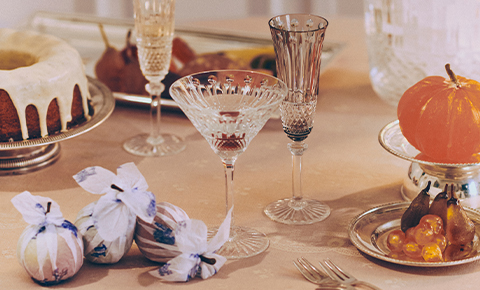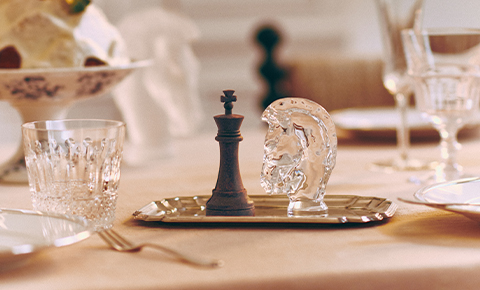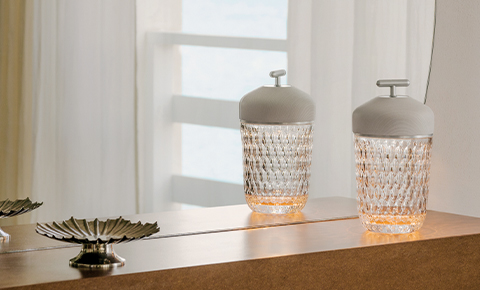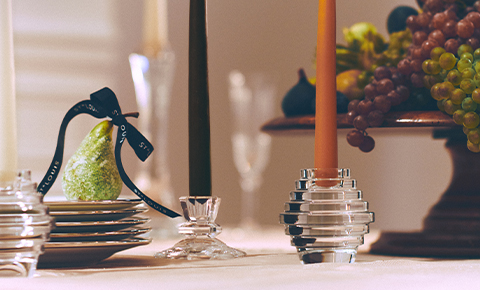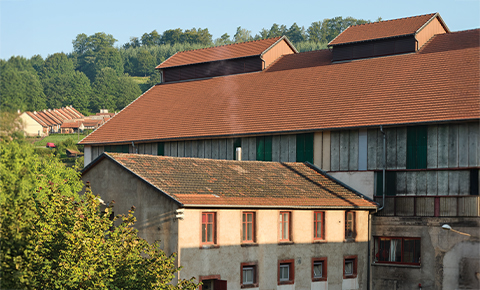Pierre Marie’s upbeating Chamade
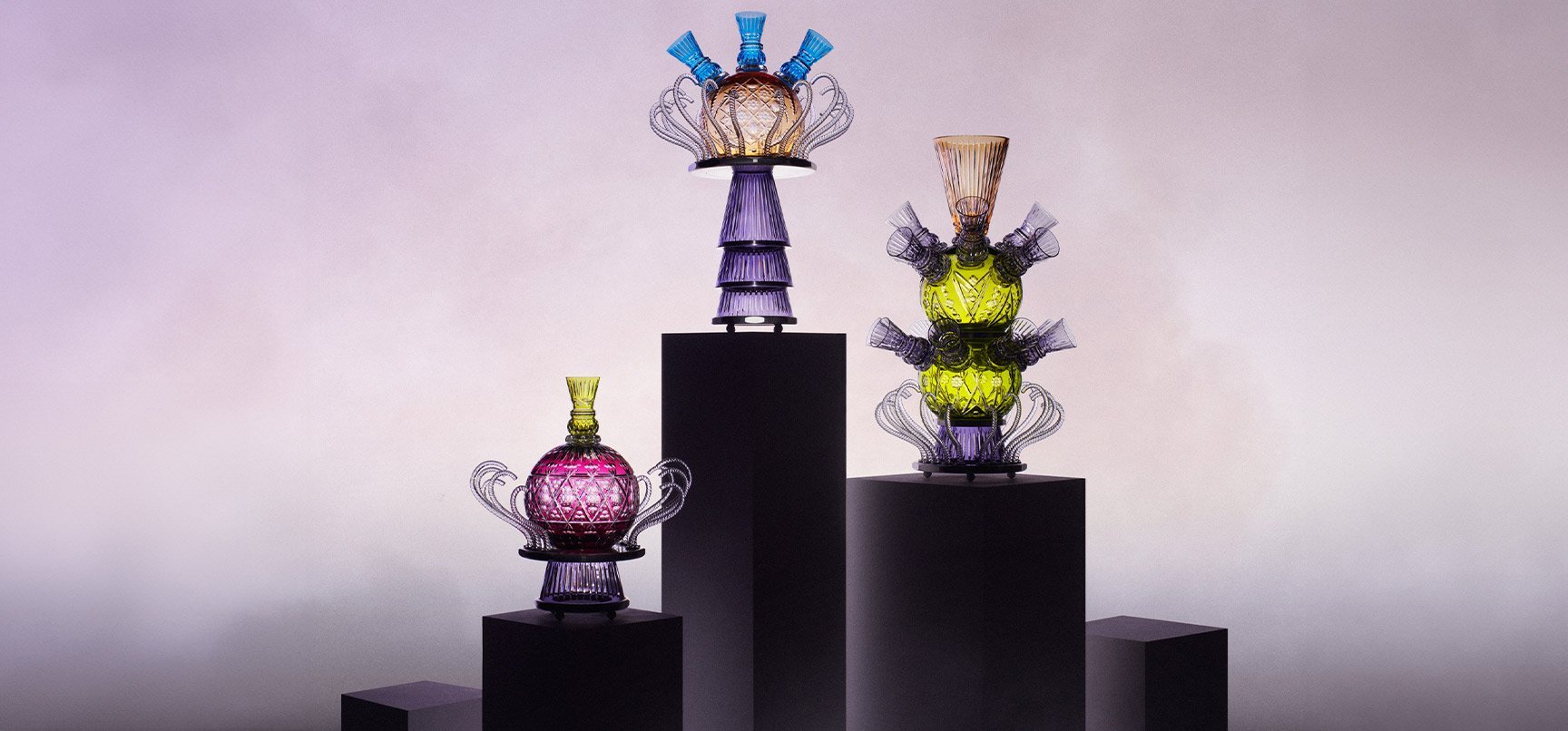
Pierre Marie's three exceptional pieces exemplify the exceptional craftsmanship of the Manufacture. Inspired by flowers and music, the ornamental talent of its creator shines through in the Chamade collection.
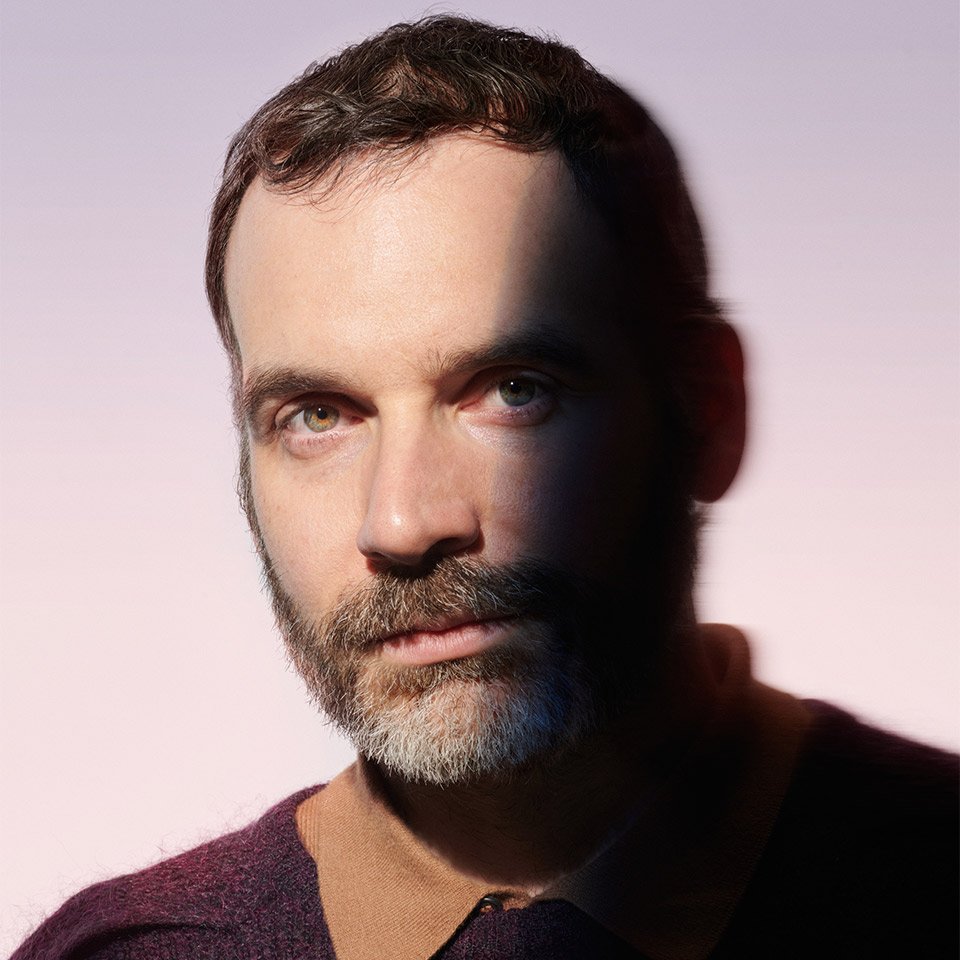
Saint-Louis — How was the idea of creating ceremonial pieces conceived?
Pierre Marie — A visit to the Manufacture, the Saint-Louis Museum, and the Attic, where thousands of archive pieces are kept; all of these experiences served as sources of inspiration. I was particularly struck by the beauty of the 19th-century vases. These ceremonial pieces prove that the crystal makers demonstrated exceptional mastery of their art. I had an urge to work on this lineage to show how the Manufacture has managed to preserve these extraordinary skills over the centuries. For this, I imagined a collection that was neither truly usual nor every day, but resolutely ornamental. These colossal totems liven up the space simply with their presence. They vibe-up the room. They invite contemplation, just like three actors making a grand entrance on stage whenever the door opens.
What do the three Chamade creations represent?
Pierre Marie — The shapes of the trio are inspired by the tulip vases of Delft and the Trompette en Chamade of the pipe organ that I played at the time. On certain organ’s cases, notably in the south-west of France, and in the Spanish tradition, the Trompette en Chamade, an extruding cluster of cone-shaped horizontal sound tubes, would adorn the facade of the case. Before switching to the harpsichord during lockdown, for practical reasons, I used to play the majestic organ a lot, which brought me the name of the collection. I found the name in several French expressions that particularly touch me, like “the heart that beats wildly (le coeur qui bat la chamade).” And also, “sound the chase (sonner la chamade)” with a trumpet or “beat the chase (battre la chamade)” on a drum, which means to surrender, or to invoke peace. It is a word inspired by my musical universe. The name is also very eclectic, which resonates differently with everyone.
Why did you choose this ornamentist approach to define your work?
Pierre Marie — Ornamentist, or ornamentalist, designates the decorative professions in all disciplines of the decorative arts. I chose this rare and also somewhat vague term to define my approach, not to fit into any category but to affirm the importance of decor today. I grew up in the 1990s with this quote from Adolf Loos, “ornament is a crime,” which, in my opinion, is misinterpreted because he used decoration for his work a lot. Rather, he denounced its pauperization, its graceless employment. We severed our connection to the ornamental tradition in pursuit of rationality after the world wars, but I have the impression that we have also sacrificed a bit of our humanity! Examining decoration is to trace one curve instead of another, to get lost in a pattern. It is a gentle and very satisfying respite for the brain to unwind, to slow down, and to meditate. And it is time to rehabilitate this particular art of living. My role is to envision this harmony, to create the conditions of communion, to shape an imaginary world, the utopias. This approach brings me a lot of joy and serenity throughout the creative process.
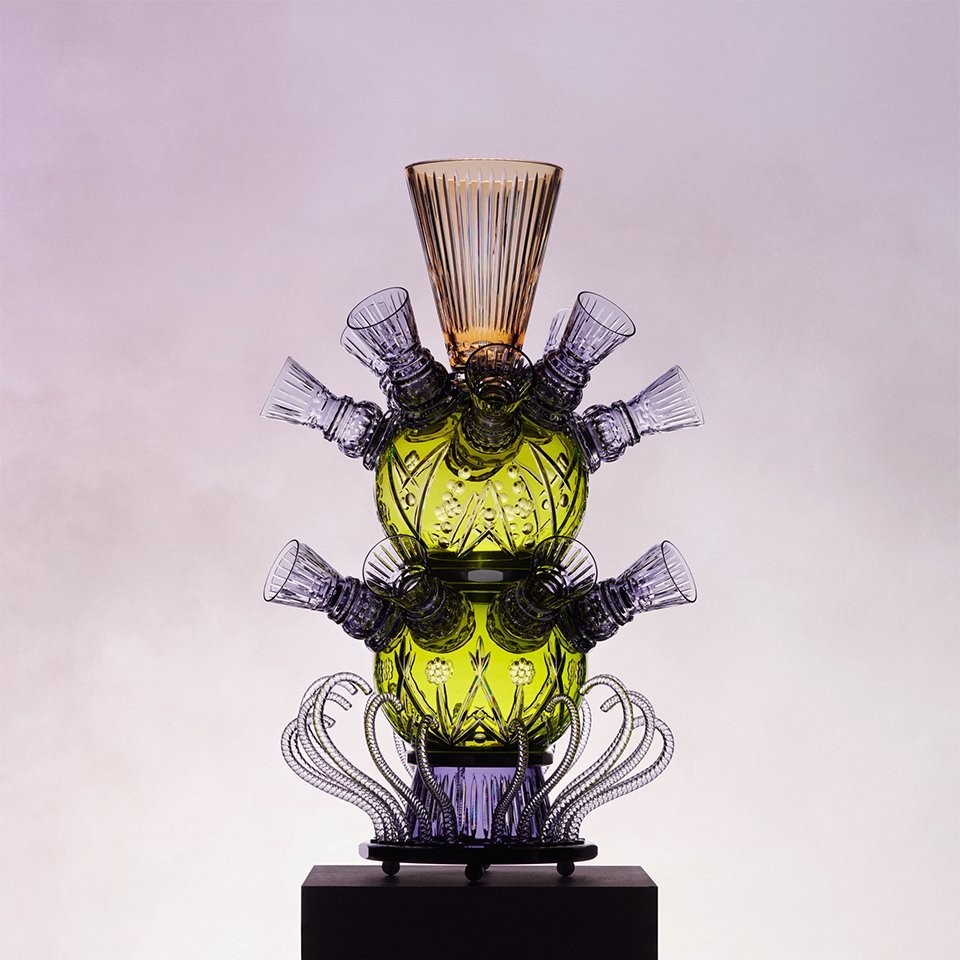
Do you always start your projects with a drawing?
Pierre Marie — I learned to draw at a very young age. Growing up, my creative and handy mother worked as a teacher, and my father was a computer scientist. Together, they built a home brimming with possibilities. I was free to pursue my interests in painting and the violin, and the only house rule was to keep practicing. I was brought up with a lot of freedom and was freed from conventions. The resultant confidence allows me to be daring, to take on somewhat crazy challenges, like designing the Chamade collection seven years ago. Since my childhood, I have cultivated a drawing style grounded in materials, techniques, and colors. The style is not as abstract as what an artist would typically create. I always love exchanging ideas with others and enjoying the tactile experience of exploring workshops and boutiques. In fact, that is how I got my start in fashion, by proposing designs to Agnès B on Rue du Jour while I was still at art school. And later at Hermès, for whom I have been designing silk squares for over fifteen years. Subsequently, I expanded my body of work by creating tapestries, carpets, and furnishing textiles, experimenting with various materials like enamels, stained glass, straw, stucco, and now, crystal.
What caught your attention at the Manufacture?
Pierre Marie — I was particularly impressed by the crystal-cutting workshop. The crystal dust creates a shimmering misty haze illuminated by the white light of the Vosges forest. I felt as though I were in heaven. You can hear the cool water running over the crystal to prevent it from overheating and cracking. Young men hold enormous globes at arm's length, swiftly measuring their sizes. I had not imagined this dynamic, athletic side of crystal-cutting expertise and artistry.
You have also paid particular attention to the cutting technique adopted for the Chamade collection.
Pierre Marie — Yes indeed. For the Chamade collection, I started with a list of existing hand cutting techniques that appealed to me and built on these established crafts to push the boundaries. I have composed the floral decorations by having a multitude of small dots carved into the main spheres — a true technical feat. "Hand cutting" techniques were also involved in introducing metal components so that each creation could be assembled and dismantled to provide the flexibility needed for cleaning the bud vases. All this know-how, inherited by the chandelier-assembling craftsmen, is vital for our extensive research and numerous tests.
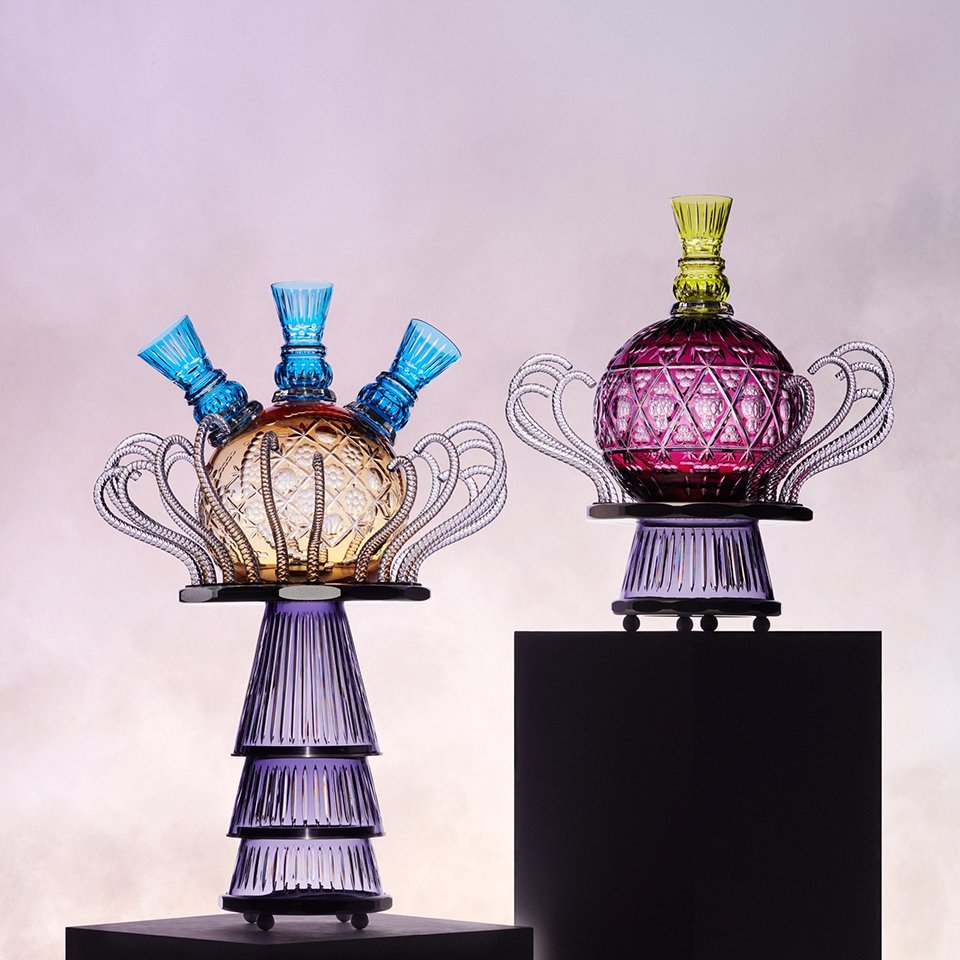
What was your approach on the colors used?
Pierre Marie — With restraint at first! Even though Saint-Louis is renowned for its sophisticated color range; but I'm a textile kid, and my first Aubusson — stitch tapestry came with 365 colors. So, I questioned the centuries-old house normal practice and showed that vibrant hues can harmonize when balanced artfully. It is simply a matter of proportion and construction. I also adopted the double-fused layering technique, where two layers of clear crystal in different shades are first fused together and then carved to reveal the hidden inner layer. So, I can create neutral backdrops on which vivid colors can flourish. I then relied on muted violet as a breeding ground for the boldly blossoming trumpet-shaped bud vases, creating the daring look I wanted. When Saint-Louis invited me to produce three exceptional designs, I embraced the opportunity for fantasy, nonconformity, and enchantment to take shape.
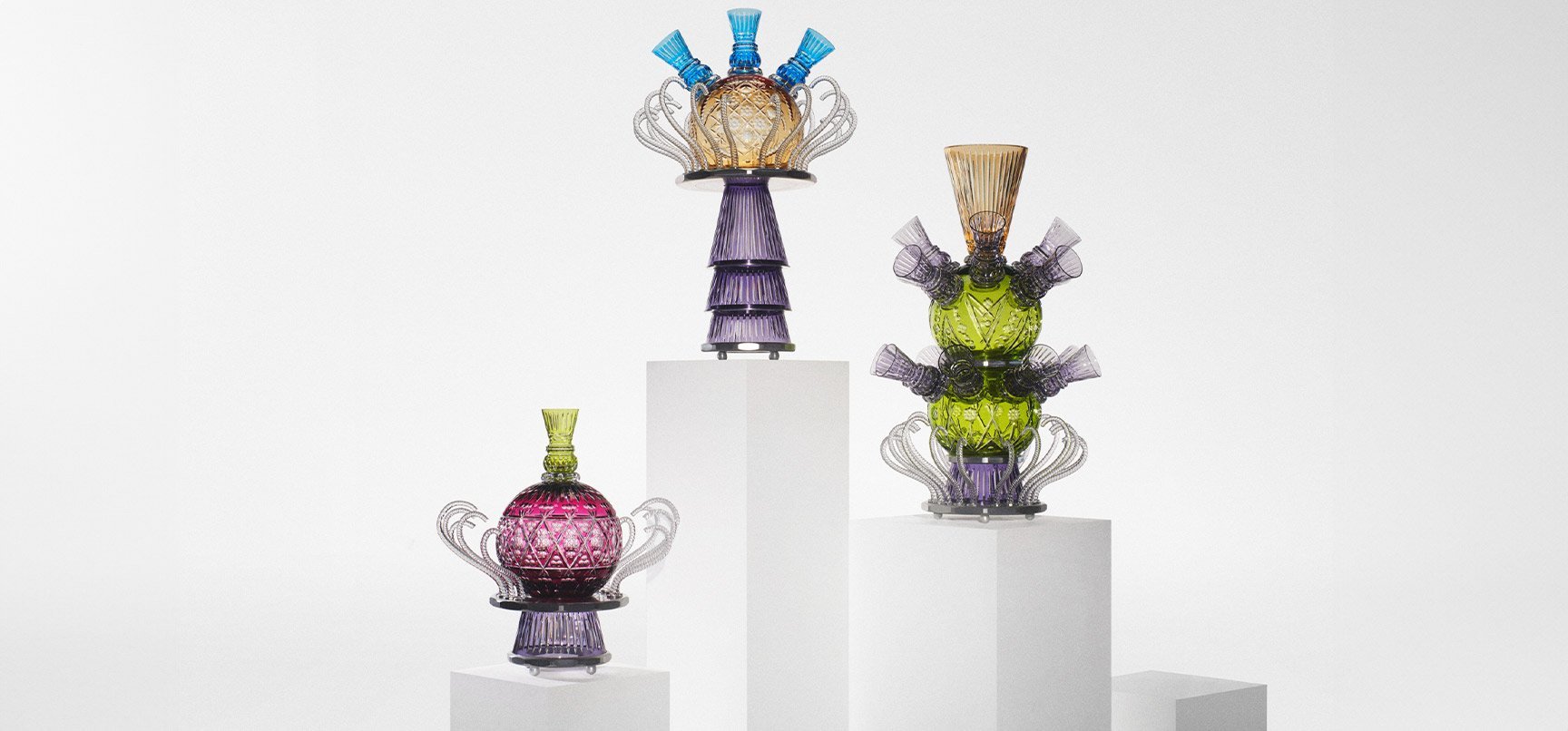
Chamade collection
Discover
